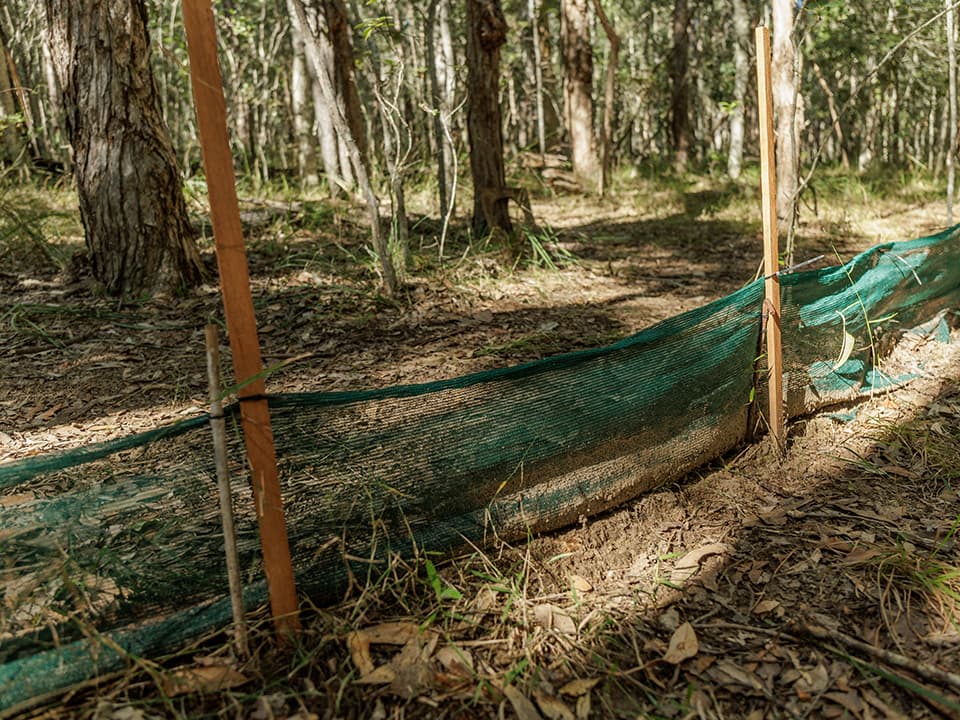Pitfall traps are used to monitor ground-dwelling amphibians, reptiles, mammals and invertebrates that live in the area for ecological studies and teaching.
By monitoring over time the types of species visiting the traps, researchers can estimate species occurrence, activity, distribution and microhabitat use.
Pitfall traps are used for ecological studies and teaching. They monitor ground-dwelling amphibians, reptiles, mammals and invertebrates that live in the area. By doing this type of monitoring repeatedly to record the types of species visiting the traps over time, researchers can estimate species occurrence, activity, distribution and microhabitat use. SERF has pitfall traps that target ground-dwelling amphibians, reptiles and mammals.
How are pitfall traps made?
QUT staff create pitfall traps at SERF that target ground dwelling amphibians, reptiles and mammals.
Buckets are dug into the ground so that the rim is flush with the surface. The buckets are then connected with green mesh fencing (drift fence) that blocks the path of small animals and funnels them into the buckets.
Leaves and twigs are placed in the bottom of the buckets to reduce predation and exposure (heat and cold) of the trapped animals.
Students place a damp sponge in the bottom of the bucket to avoid the trapped animals becoming dehydrated. Floats (cork or a small piece of foam) are also placed in the bucket to give animals something to hold onto in case the bucket becomes filled with water.
Students camp at SERF, leaving the traps overnight, and check them early in the morning before the buckets get too hot. Animals in traps are released after being recorded.
What do you notice?
Ground-dwelling animals can live in burrows, grass, hollow logs, standing dead trees and under rocks. Look at the change in forest type ahead. At this point, there is a slight change in the composition of the forest and it becomes more obvious as you travel down the gradient. We are moving away from an open dry Eucalyptus species dominated forest to a wetter and denser Melaleuca species dominated forest.
